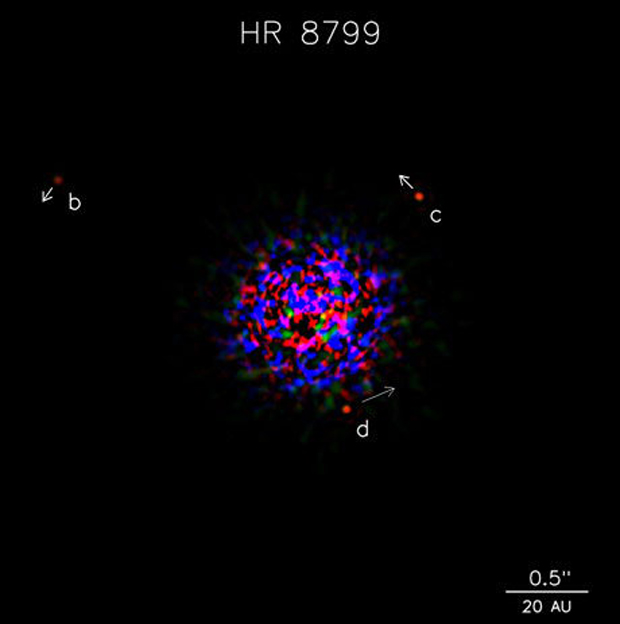Alien Planet-Hunting Project 1640 Snaps Photos of Faraway Worlds

NEW YORK — A planet-hunting project is snapping pictures of alien worlds and other objects orbiting nearby stars in an effort to give scientists a better understanding of these intriguing exoplanets.
Project 1640 is designed to probe the atmospheres of exoplanets to create new, low-resolution images of the planets and their stars. By understanding the atmosphere of the planets and the composition of the stars, scientists working with the project could potentially learn more about how they formed.
Scientists working with Project 1640 — an imaging system at the Palomar Observatory in California — are using the specialized system to survey about 200 stars looking for a range of planets and other objects, project scientist Ben Oppenheimer said here at the American Museum of Natural History event on Feb. 5. According to AMNH officials, Project 1640 is "the most advanced and highest contrast imaging system in the world." [See photos of a star and four planets found by Project 1640]
"The planets of our own solar system, of course, are planets in and of themselves and in order to understand them — and indeed this planet — I think we need to study other planets," Oppenheimer said. "If you just look at the planets of our own solar system, they're really complicated."
The project is designed to help space scientists get a better sense of the diversity of planets that exist in the universe. Scientists are also looking for mysterious cosmic objects known as brown dwarfs that are too large to be considered a planet, but too small to produce fusion in their cores.
Different chemicals, like carbon dioxide, absorb light differently, allowing scientists working with Project 1640 to take measurements and see where various signatures fall on the spectra.
Oppenheimer and his colleagues using Project 1640 have already peered into the atmospheres of four cloud-covered alien planets around the star HR 8799, 127 light-years from Earth. All four of the planets are more massive than Jupiter and display some odd characteristics.
Get the Space.com Newsletter
Breaking space news, the latest updates on rocket launches, skywatching events and more!
"These warm, red planets are unlike any other known object in our universe," Oppenheimer said in a statement announcing the discovery in 2013. "All four planets have different spectra, and all four are peculiar. The theorists have a lot of work to do now."

The scientists found that all four of the planets' atmospheres had either ammonia or methane, but not both. This is odd because the alien worlds are somewhat warm at about 1340 degrees Fahrenheit (727 degrees Celsius). With that temperature, scientist would expect to see both methane and ammonia mingling in their atmospheres.
Project 1640 observations are ongoing and are expected to last for three years.
Follow Miriam Kramer @mirikramer and Google+. Follow us @Spacedotcom, Facebook and Google+. Original article on Space.com.
Join our Space Forums to keep talking space on the latest missions, night sky and more! And if you have a news tip, correction or comment, let us know at: community@space.com.

Miriam Kramer joined Space.com as a Staff Writer in December 2012. Since then, she has floated in weightlessness on a zero-gravity flight, felt the pull of 4-Gs in a trainer aircraft and watched rockets soar into space from Florida and Virginia. She also served as Space.com's lead space entertainment reporter, and enjoys all aspects of space news, astronomy and commercial spaceflight. Miriam has also presented space stories during live interviews with Fox News and other TV and radio outlets. She originally hails from Knoxville, Tennessee where she and her family would take trips to dark spots on the outskirts of town to watch meteor showers every year. She loves to travel and one day hopes to see the northern lights in person. Miriam is currently a space reporter with Axios, writing the Axios Space newsletter. You can follow Miriam on Twitter.
